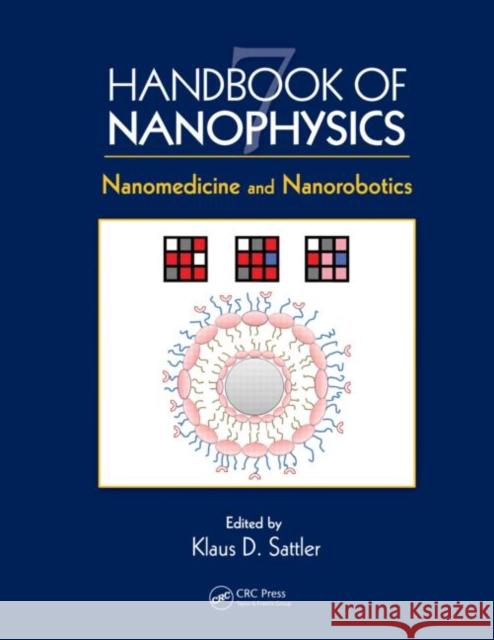Handbook of Nanophysics : Nanomedicine and Nanorobotics » książka
Handbook of Nanophysics : Nanomedicine and Nanorobotics
ISBN-13: 9781420075465 / Angielski / Twarda / 2010 / 887 str.
Handbook of Nanophysics : Nanomedicine and Nanorobotics
ISBN-13: 9781420075465 / Angielski / Twarda / 2010 / 887 str.
(netto: 836,19 VAT: 5%)
Najniższa cena z 30 dni: 856,36
ok. 22 dni roboczych.
Darmowa dostawa!
The tools of nanodiagnostics, nanotherapy, and nanorobotics are expected to revolutionize the future of medicine, leading to presymptomatic diagnosis of disease, highly effective targeted treatment therapy, and minimum side effects. Handbook of Nanophysics: Nanomedicine and Nanorobotics presents an up-to-date overview of the application of nanotechnology to molecular and biological processes, medical imaging, targeted drug delivery, and cancer treatment. Each peer-reviewed chapter contains a broad-based introduction and enhances understanding of the state-of-the-art scientific content through fundamental equations and illustrations, some in color.
This volume shows how the materials, tools, and techniques of nanotechnology, such as enzymatic nanolithography, biomimetic approaches, and force spectroscopy, are currently used in biological applications, including living cell biochips, biosensors, protein recognition, and the analysis of biomolecules. Drawing on emerging toxicology research, it examines the impact and risks of nanomaterials on human health and the environment. Researchers at the forefront of the field cover tissue engineering, diagnostic, drug delivery, and therapeutic applications, including organs derived from nanomaterials, quantum dots and magnetic nanoparticles for imaging, pharmaceutical nanocarriers, targeted magnetic particles and biodegradable nanoparticles for drug delivery, and cancer treatment using gold nanoparticles. They also explain how cells and skin respond to these nanomaterials.
In addition, the book investigates the next generation of nanotechnology research that is focused on nanorobotics and its potential in detecting and destroying cancer cells and detecting and measuring toxic chemicals. It considers the roles nanoheaters, nanomotors, and nanobatteries can play in this new technology.
Nanophysics brings together multiple disciplines to determine the structural, electronic, optical, and thermal behavior of nanomaterials; electrical and thermal conductivity; the forces between nanoscale objects; and the transition between classical and quantum behavior. Facilitating communication across many disciplines, this landmark publication encourages scientists with disparate interests to collaborate on interdisciplinary projects and incorporate the theory and methodology of other areas into their work.











